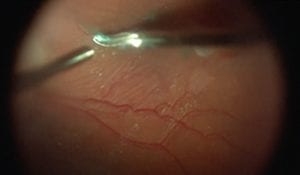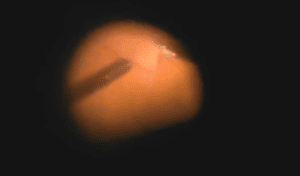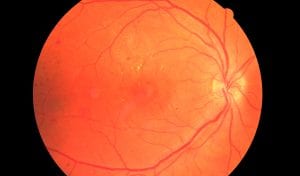
Surgery of the Macula – The Human Center of Vision
The macula is a pinhead-sized part of the eye’s retina film that accounts for all central, detailed vision. Sudden hemorrhage under the macular is the most catastrophic form of macular degeneration, the leading cause of sight loss in persons over age 65. Unless the resultant blood clot is removed within days, macular vision is usually lost. Dr. Morris developed an operation to remove all hemorrhage from the under the macula, called “Mobilize and Move (M&M) Vitrectomy.”8 With only one night of prone positioning, most patients recover from a legally blind status to their previous level of reading vision!
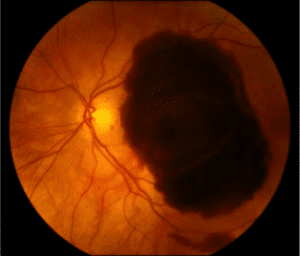
Submacular Hemorrhage Visual acuity count fingers
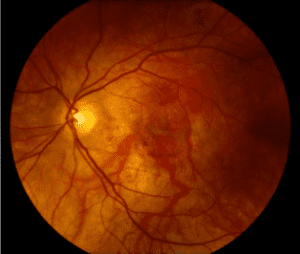
Submacular Hemorrhage Postoperative image showing complete resolution of blood from the maculaVisual Acuity 20/20
Peeling Epimacular Proliferation (EMP) and the Internal Limiting Membrane (ILM)
Epimacular proliferation occurs when collagenous cells create a thin layer of scar tissue on the macula. EMP (macular pucker) can be associated with a number of ocular conditions such as posterior vitreous detachments (PVD), retinal tears, retinal detachments, and several other retinal conditions. EMP can cause distorted or blurred central vision in otherwise normal, healthy eyes. Dr. Morris and his team were the first retina surgeons to report a revolutionary surgery to repair the diseased macula by intentionally removing the ILM in patients with EMP and other diseases of the macula.
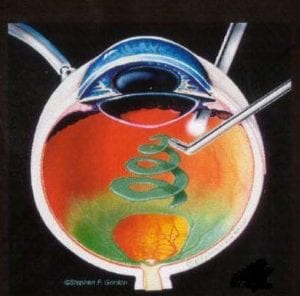
Peeling the Macula (the human center of vision)
Dr. Robert Morris and the Helen Keller Foundation proved that recently injured eyes with no remaining light perception (NLP) could often be surgically restored to useful vision, saving many eyes from being removed without the benefit of exploration and attempted reconstruction.
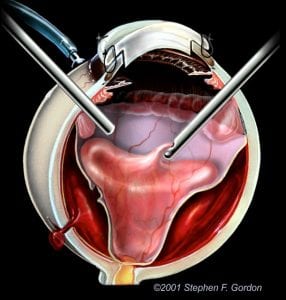
Temporary Keratoprosthesis (TKP) – An optical device inserted in place of an injured cornea to provide temporary surgical visualization of the posterior eye.
Spontaneous retinal detachment is a scourge that has plagued mankind since ancient times, producing blindness that became partially treatable only in modern times. In 2002, Dr. Morris and his fellow Helen Keller Foundation researchers announced a laser treatment that can finally prevent retinal detachment in high-risk eyes with 98% certainty.
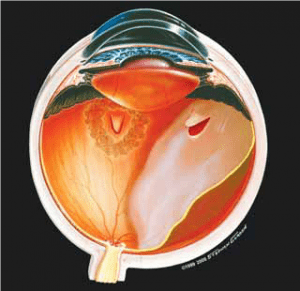
Spontaneous RD in the aging eye.
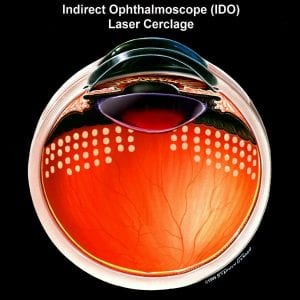
Ora Secunda Cerclage – non-invasive laser spots prevent retinal detachment.
During the first decade of the new millennium, Dr. Morris and Helen Keller Foundation researchers developed a laser-based cure that now can save central vision in diabetic retinopathy – the leading cause of sight loss in the working age population of developed countries worldwide. The same laser-based technique offers better hope for those over age 65 who develop strokes of the retina.

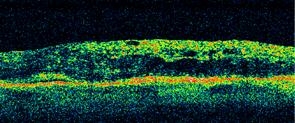
Before treatment
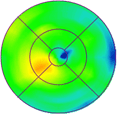
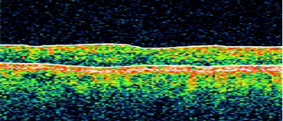
After treatment
Image of swollen center of vision (macula) before and the still dry macula four years after treatment. Visual acuity recovered from 20/60 to nearly 20/20, restoring reading vision.
